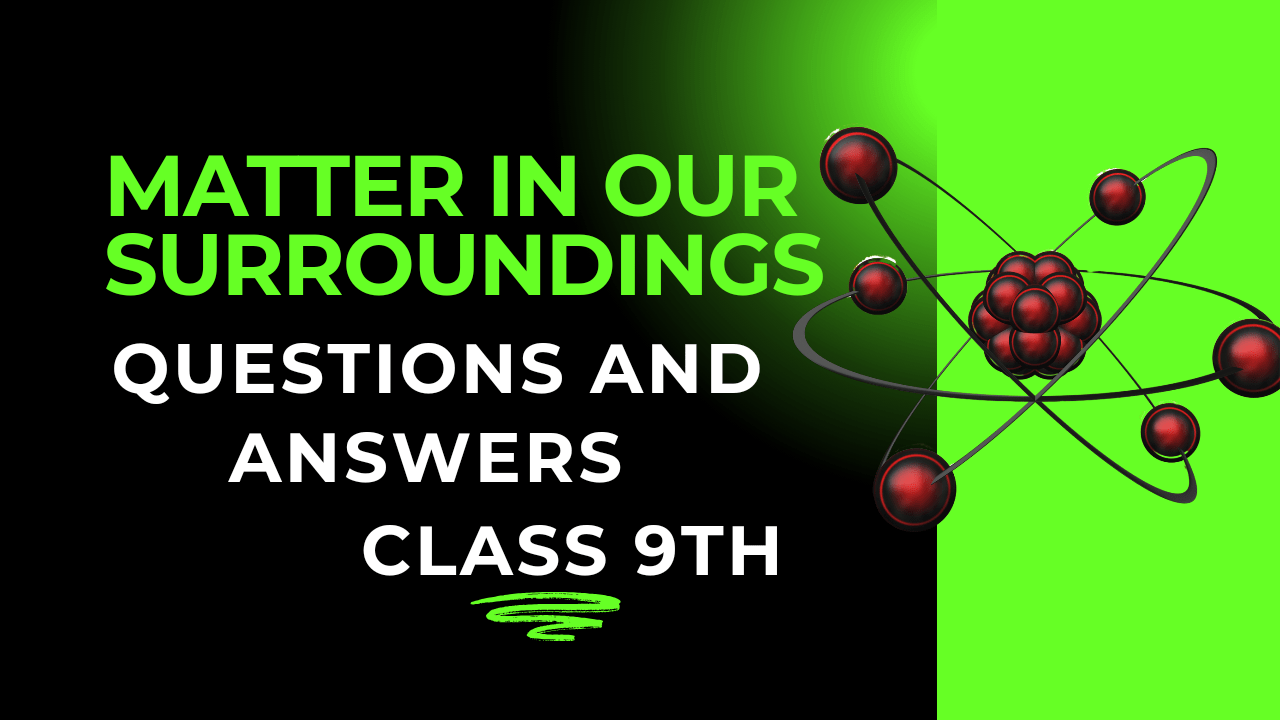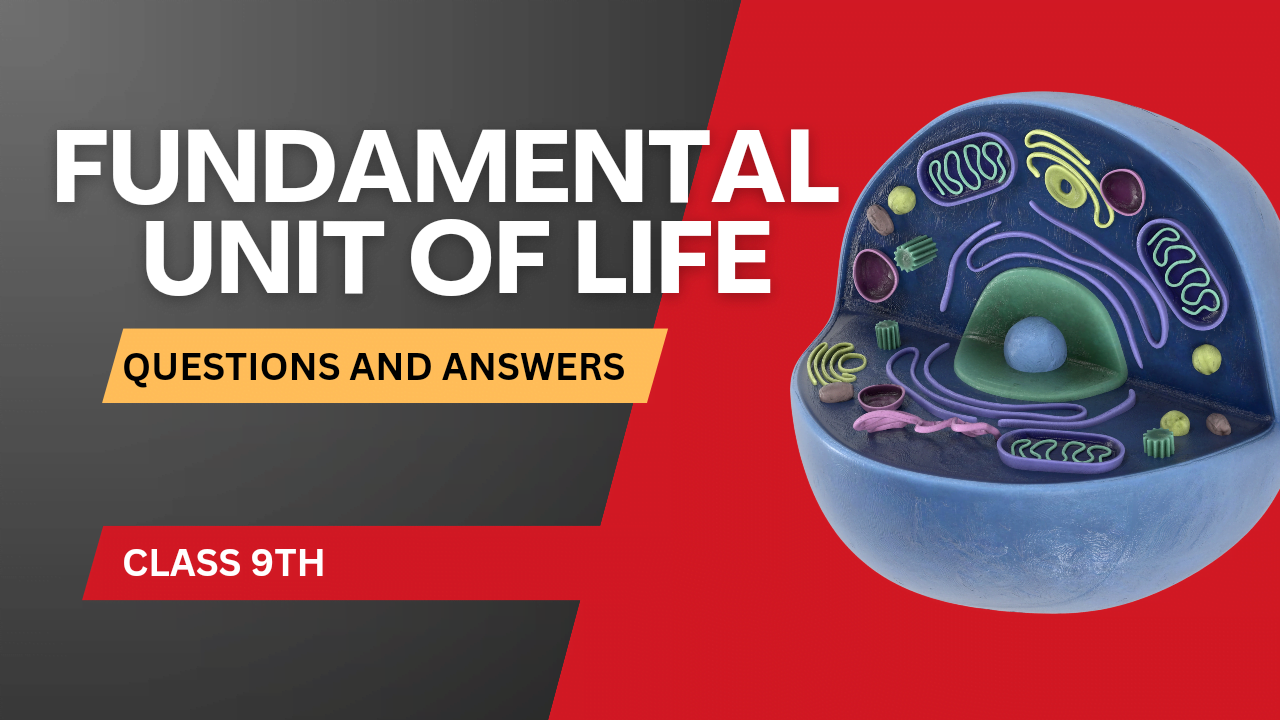Force and Motion NCERT Solutions Important Notes class 9th Physics essential for JKBOSE and CBSE.
Force is a push or pull on an object that can cause it to change its velocity, meaning it can speed up, slow down, or change direction. Motion is the change in position of an object over time.
- Types of Motion: Objects can have linear motion, circular motion, oscillatory motion, or vibratory motion.
Example:
- Pushing a stationary car to move it forward is an application of force, which causes the car to change from a state of rest to motion.
Galileo’s Concept of Force and Motion
Galileo Galilei proposed that objects continue to move in the absence of external forces, and only when a force acts upon them do they stop or change direction. His ideas laid the foundation for Newton’s First Law of Motion.
Key Points:
- Objects will continue in their natural state of motion unless an external force (like friction or gravity) interferes.
- Galileo also concluded that all objects, regardless of their mass, fall at the same rate in a vacuum.
Example:
- Dropping two different-sized balls from the same height in a vacuum chamber shows that they hit the ground simultaneously, proving that mass doesn’t affect the falling speed in the absence of air resistance.
Inertia and Its Types
Inertia is the property of an object to resist any change in its state of motion. The greater the mass of an object, the greater its inertia.
Types of Inertia:
- Inertia of Rest: The tendency of an object to remain at rest unless acted upon by an external force.Example 1: A book lying on a table will remain there unless someone pushes it.
- Inertia of Motion: The tendency of an object in motion to continue moving at a constant velocity unless acted upon by an external force.Example 2: A moving car will continue moving at the same speed unless the driver applies brakes.
- Inertia of Direction: The tendency of an object to continue moving in the same direction unless acted upon by an external force.Example 3: A car turning around a curve will tend to move outward due to the inertia of direction.
Examples of Inertia:
- Example 1: When a bus suddenly stops, passengers tend to move forward due to the inertia of motion.
- Example 2: Shaking the branches of a tree causes some leaves and fruits to fall due to the inertia of rest.
- Example 3: When an athlete runs before taking a jump, it helps them jump further due to inertia of motion.
- Example 4: When you suddenly stop a bicycle, your body tends to move forward due to inertia of motion.
- Example 5: A car driver making a sharp turn feels the car wanting to continue straight due to inertia of direction.
Linear Momentum
Linear Momentum is the quantity of motion possessed by a moving object. It depends on both the mass and velocity of the object.
Mathematical Expression: Linear Momentum=mass×velocity
Linear Momentum=mass×velocity p=mv
Key Points:
- Momentum is a vector quantity; it has both magnitude and direction.
- The greater the mass and velocity, the greater the momentum of the object.
Example:
- A moving truck has more momentum than a bicycle moving at the same speed because the truck has more mass.
Newton’s First Law of Motion (Law of Inertia)
Statement:
An object at rest will remain at rest, and an object in motion will continue moving with constant velocity unless acted upon by an external force.
Explanation: This law introduces the concept of inertia, explaining that objects resist changes in their motion unless an unbalanced force acts on them.
Example 1:
A soccer ball remains at rest until someone kicks it, applying an external force.
Example 2:
A hockey puck sliding on ice will keep sliding in a straight line until friction (external force) slows it down and eventually stops it.
Force
Force is an external effort that causes an object to move, stop, or change its direction. It has both magnitude and direction, making it a vector quantity.
Key Points:
- Force can cause an object to accelerate.
- It can also change the shape of an object.
Example:
Pushing a chair across the floor applies force that causes the chair to move in the direction of the push.
Types of Forces
- Balanced Forces: When the forces acting on an object are equal in magnitude but opposite in direction, they cancel each other out, and the object remains in equilibrium.Example:
A book resting on a table experiences balanced forces – gravity pulls it downward, and the table pushes it upward with equal force. - Unbalanced Forces: When the forces acting on an object are not equal, they cause the object to move in the direction of the greater force.Example:
A person pushing a stalled car applies unbalanced force, causing the car to move.
Resultant Force
Resultant Force is the single force that represents the combined effect of all the individual forces acting on an object. When multiple forces act on an object, they can be added vectorially to determine the resultant force.
Example:
In a tug-of-war, if one team pulls with a greater force than the other, the rope moves toward the team with the greater force. The resultant force is in the direction of the stronger team.
Balanced and Unbalanced Forces
- Balanced Forces: Forces that are equal in magnitude and opposite in direction, resulting in no change in motion.Example:
A person standing still experiences balanced forces – gravity pulls them down, and the ground pushes up with an equal force. - Unbalanced Forces: Forces that are not equal, causing a change in the state of motion.Example:
A car accelerating forward experiences unbalanced forces, with the engine providing more force than air resistance and friction.
Rotating Effect of Force (Torque)
Torque is the measure of the force that can cause an object to rotate around an axis. It depends on the magnitude of the force and the distance from the axis of rotation.
Mathematical Expression: Torque(τ)=Force(F)×Distance from axis(r)
Example:
Opening a door requires applying force at the edge of the door, far from the hinges, to create torque that rotates the door open.
Newton’s Second Law of Motion (Law of Force and Acceleration)
Statement:
The acceleration of an object is directly proportional to the product of net force acting on it and to its mass. The direction of the acceleration is the same as the direction of the applied force.
Mathematical Expression: F=ma Where:
- F is the net force,
- mmm is the mass,
- aaa is the acceleration.
Example 1:
Pushing a light shopping cart results in greater acceleration compared to pushing a heavy cart with the same force.
Example 2:
A baseball thrown with greater force will accelerate faster than a ball thrown with less force.
Newton’s Third Law of Motion (Action and Reaction)
Statement:
For every action, there is an equal and opposite reaction.
Explanation: Whenever a force is applied by one object, an equal and opposite force is exerted by the second object on the first.
Example 1:
When you jump off a boat, you push the boat backward (action), and the boat pushes you forward (reaction).
Example 2:
When a rocket launches, the engines push the exhaust gases downward (action), and the rocket is pushed upward (reaction).
Impulse
Impulse is the change in momentum of an object when a force is applied over a period of time. It is given by the product of force and time.
Mathematical Expression: Impulse=Force×Time
Impulse=Force×Time J=F×Δt
Example:
In cricket, a fielder lowers their hands while catching the ball to increase the time of impact, reducing the force felt and safely catching the ball.
Conservation of Momentum
The Law of Conservation of Momentum states that the total momentum of a closed system remains constant if no external forces act on it. The total momentum before and after an event is the same.
Mathematical Expression: m1v1+m2v2=m1v1′+m2v2′
Example:
When two ice skaters push off against each other, the total momentum of the system (both skaters) remains constant, and they move apart with equal and opposite momentum.
Physics Questions – Force and Laws of Motion
Question 1
Which of the following has more inertia?
- (a) A rubber ball and a stone of the same size?
- (b) A bicycle and a train?
- (c) A five-rupees coin and a one-rupee coin?
Answer:
(a) The stone has more inertia because it has more mass than the rubber ball.
(b) The train has more inertia because it has much more mass than the bicycle.
(c) The five-rupees coin has more inertia because it has more mass than the one-rupee coin.
Question 2
In the following example, try to identify the number of times the velocity of the ball changes:
“A football player kicks a football to another player of his team who kicks the football towards the goal. The goalkeeper of the opposite team collects the football and kicks it towards a player of his own team”.
Also identify the agent supplying the force in each case.
Answer:
The velocity of the ball changes three times:
- When the first player kicks the ball (Agent: first player).
- When the second player kicks the ball towards the goal (Agent: second player).
- When the goalkeeper kicks the ball back (Agent: goalkeeper).
Question 3
Explain why some of the leaves may get detached from a tree if we vigorously shake its branch.
Answer:
When the branch of a tree is shaken vigorously, the leaves tend to remain in their state of rest due to inertia. As a result, they get detached from the tree.
Question 4
Why do you fall in the forward direction when a moving bus brakes to a stop and fall backwards when it accelerates from rest?
Answer:
When a moving bus brakes to a stop, your body tends to continue moving forward due to inertia, making you fall forward. When the bus accelerates from rest, your body tends to remain at rest, causing you to fall backward.
Question 5
If action is always equal to the reaction, explain how a horse can pull a cart.
Answer:
While action and reaction forces are equal and opposite, they act on different bodies. The horse exerts a backward force on the ground, and the ground exerts an equal and opposite forward force on the horse, allowing it to pull the cart forward.
Question 6
Explain why it is difficult for a fireman to hold a hose that ejects large amounts of water at high velocity.
Answer:
The water ejected at high velocity creates a backward reaction force on the hose, making it difficult for the fireman to hold due to Newton’s third law of motion (action and reaction forces).
Question 7
From a rifle of mass 4 kg, a bullet of mass 50 g is fired with an initial velocity of 35 m/s. Calculate the initial recoil velocity of the rifle.
Answer:
Using the law of conservation of momentum:
Initial momentum of bullet = Final momentum of rifle
Momentum of bullet = mass of bullet × velocity of bullet = 0.05 kg × 35 m/s = 1.75 kg m/s
Recoil velocity of rifle = momentum of bullet / mass of rifle = 1.75 kg m/s / 4 kg = 0.4375 m/s
Answer: 0.44 m/s (approx.) in the opposite direction of the bullet.
Question 8
Two objects of masses 100 g and 200 g are moving along the same line and direction with velocities of 2 m/s and 1 m/s, respectively. They collide and after the collision, the first object moves at a velocity of 1.67 m/s. Determine the velocity of the second object.
Answer:
Using the law of conservation of momentum:
Initial momentum = Final momentum
Initial momentum = (0.1 kg × 2 m/s) + (0.2 kg × 1 m/s) = 0.2 + 0.2 = 0.4 kg m/s
Final momentum = (0.1 kg × 1.67 m/s) + (0.2 kg × V₂) = 0.167 + 0.2V₂
Equating the initial and final momentums: 0.4 = 0.167 + 0.2V₂
0.2V₂ = 0.4 – 0.167 = 0.233
V₂ = 0.233 / 0.2 = 1.165 m/s
Answer: 1.165 m/s
Physics Questions – Laws of Motion and Forces
Question 1
An object experiences a net zero external unbalanced force. Is it possible for the object to be travelling with a non-zero velocity? If yes, state the conditions that must be placed on the magnitude and direction of the velocity. If no, provide a reason.
Answer:
Yes, it is possible for an object to be travelling with a non-zero velocity even if it experiences a net zero external unbalanced force. According to Newton’s first law of motion, an object in motion will continue to move at a constant velocity in a straight line unless acted upon by an external force. Therefore, the object can continue to travel with a constant velocity (magnitude and direction must remain constant) if there is no external unbalanced force acting on it.
Question 2
When a carpet is beaten with a stick, dust comes out of it. Explain.
Answer:
When a carpet is beaten with a stick, the carpet is set into motion while the dust particles tend to remain at rest due to inertia. As a result, the dust particles get detached from the carpet and come out.
Question 3
Why is it advised to tie any luggage kept on the roof of a bus with a rope?
Answer:
When the bus accelerates or decelerates, the luggage on the roof tends to remain in its state of rest or motion due to inertia. To prevent the luggage from falling off due to sudden changes in motion, it is advised to tie it securely with a rope.
Question 4
A batsman hits a cricket ball which then rolls on a level ground. After covering a short distance, the ball comes to rest. The ball slows to a stop because:
- (a) the batsman did not hit the ball hard enough.
- (b) velocity is proportional to the force exerted on the ball.
- (c) there is a force on the ball opposing the motion.
- (d) there is no unbalanced force on the ball, so the ball would want to come to rest.
Answer:
(c) There is a force on the ball opposing the motion. This opposing force is friction, which acts between the ball and the ground, causing the ball to slow down and eventually come to rest.
Question 5
A truck starts from rest and rolls down a hill with a constant acceleration. It travels a distance of 400 m in 20 s. Find its acceleration. Find the force acting on it if its mass is 7 tonnes. (Hint: 1 tonne = 1000 kg.)
Answer:
Given:
Initial velocity (u) = 0 m/s
Distance (s) = 400 m
Time (t) = 20 s
Mass (m) = 7 tonnes = 7000 kg
Using the equation of motion: \(s = ut + \frac{1}{2} a t^2\)
400 = 0 × 20 + \(\frac{1}{2}\) × a × (20)^2
400 = \(\frac{1}{2}\) × a × 400
Acceleration (a) = 2 m/s²
Force (F) = mass × acceleration = 7000 kg × 2 m/s² = 14000 N
Answer: Acceleration = 2 m/s², Force = 14000 N
Question 6
A stone of 1 kg is thrown with a velocity of 20 m/s across the frozen surface of a lake and comes to rest after travelling a distance of 50 m. What is the force of friction between the stone and the ice?
Answer:
Given:
Mass (m) = 1 kg
Initial velocity (u) = 20 m/s
Final velocity (v) = 0 m/s
Distance (s) = 50 m
Using the equation of motion: \(v^2 = u^2 + 2as\)
0 = (20)^2 + 2 × a × 50
-400 = 100a
Acceleration (a) = -4 m/s²
Force of friction (F) = mass × acceleration = 1 kg × -4 m/s² = -4 N
Answer: The force of friction is 4 N (opposite to the direction of motion).
Question 7
An 8000 kg engine pulls a train of 5 wagons, each of 2000 kg, along a horizontal track. If the engine exerts a force of 40000 N and the track offers a friction force of 5000 N, then calculate: (a) the net accelerating force and (b) the acceleration of the train.
Answer:
(a) Net accelerating force = Applied force – Friction force = 40000 N – 5000 N = 35000 N
(b) Total mass of train = mass of engine + mass of wagons = 8000 kg + 5 × 2000 kg = 18000 kg
Acceleration (a) = Net force / Total mass = 35000 N / 18000 kg ≈ 1.94 m/s²
Answer: Net accelerating force = 35000 N, Acceleration = 1.94 m/s²
Question 8
An automobile vehicle has a mass of 1500 kg. What must be the force between the vehicle and road if the vehicle is to be stopped with a negative acceleration of 1.7 m/s²?
Answer:
Force (F) = mass × acceleration = 1500 kg × (-1.7 m/s²) = -2550 N
Answer: The force between the vehicle and the road must be 2550 N (in the opposite direction of motion).
Question 9
What is the momentum of an object of mass m, moving with a velocity v?
- (a) (mv)²
- (b) mv²
- (c) ½ mv²
- (d) mv
Answer:
(d) Momentum is defined as the product of mass and velocity. Therefore, momentum = mv.
Question 10
Using a horizontal force of 200 N, we intend to move a wooden cabinet across a floor at a constant velocity. What is the friction force that will be exerted on the cabinet?
Answer:
Since the cabinet is moving at a constant velocity, the frictional force must be equal in magnitude and opposite in direction to the applied force. Therefore, the friction force is 200 N.
Question 11
Two objects, each of mass 1.5 kg, are moving in the same straight line but in opposite directions. The velocity of each object is 2.5 m/s before the collision during which they stick together. What will be the velocity of the combined object after the collision?
Answer:
Let the velocity of the first object be 2.5 m/s in the positive direction and the velocity of the second object be -2.5 m/s (opposite direction).
The total momentum before collision = (1.5 kg × 2.5 m/s) + (1.5 kg × -2.5 m/s) = 3.75 kg m/s – 3.75 kg m/s = 0
Since the total momentum is zero and momentum is conserved, the velocity of the combined object after the collision will also be zero.
Answer: The velocity of the combined object after the collision is 0 m/s.
Question 12
According to the third law of motion, when we push on an object, the object pushes back on us with an equal and opposite force. If the object is a massive truck parked along the roadside, it will probably not move. A student justifies this by answering that the two opposite and equal forces cancel each other. Comment on this logic and explain why the truck does not move.
Answer:
The student’s logic is incorrect. The two forces do not cancel each other because they act on different bodies. The force we apply is on the truck, and the force the truck applies is on us. The truck does not move because the applied force is not sufficient to overcome the truck’s inertia and the frictional force between the truck’s tires and the ground.
Question 13
A hockey ball of mass 200 g travelling at 10 m/s is struck by a hockey stick so as to return it along its original path with a velocity of 5 m/s. Calculate the magnitude of change of momentum occurred in the motion of the hockey ball by the force applied by the hockey stick.
Answer:
Given:
Mass (m) = 200 g = 0.2 kg
Initial velocity (u) = 10 m/s
Final velocity (v) = -5 m/s (opposite direction)
Change in momentum = Final momentum – Initial momentum = (m × v) – (m × u) = (0.2 kg × -5 m/s) – (0.2 kg × 10 m/s)
Change in momentum = -1 kg m/s – 2 kg m/s = -3 kg m/s
The magnitude of change of momentum is 3 kg m/s.




